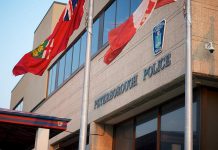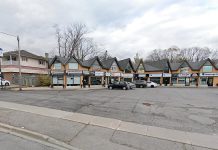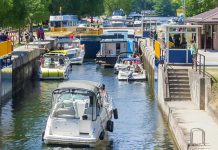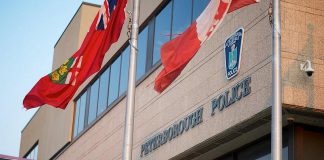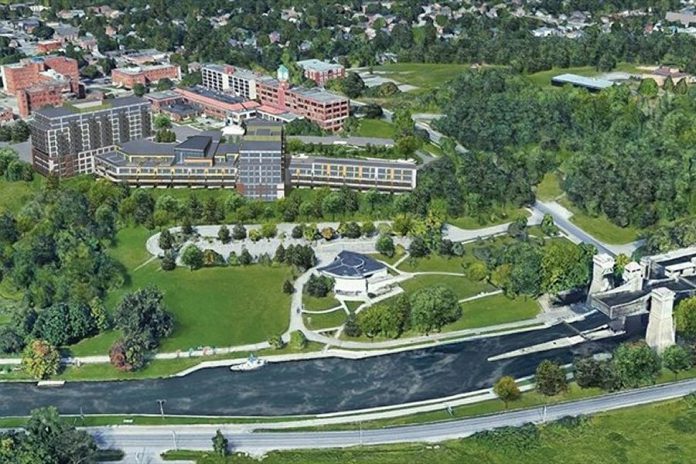
At first glance, the announcement of several major residential construction projects in the City of Peterborough’s east end is bound to be greeted with some sense of excitement.
After all, housing is among the City’s most pressing issues, and it has become more and more obvious that we need to address the current occupancy and rent price crisis that is making housing in Peterborough so difficult for renters.
With nearly zero percent vacancy and entry-level price points for rental units being unaffordable for many residents, things have, indeed, become dire for much of our population when it comes to securing a place to live.
A closer look, though, reveals both a lack a foresight and a lack of units targeted for existing renters.
As it grows, a municipality has to plan for and supply sustainable and affordable housing. And I am most concerned that the City of Peterborough is not making this a priority as construction projects are green-lit. I also fear that, with the announcement of yet more development along the Lift Lock, the “village” of East City will be a major casualty in this lack of planning.
Should we move forward with the announced development, East City, as a community, is done. It will become an area stretched past capacity in both infrastructure and services for existing and new residents. Parts of it will be unrecognizable to how current residents currently experience and use it. In short, it will be an absolute urban planning failure.
As it currently stands, there are three major apartment/condo complexes and a subdivision all planned to straddle the Lift Lock and reach down Armour Hill on Hunter Street East. That’s something like 1,200 houses and condominium/apartment units on an already overstretched (and severely limited) transportation corridor.
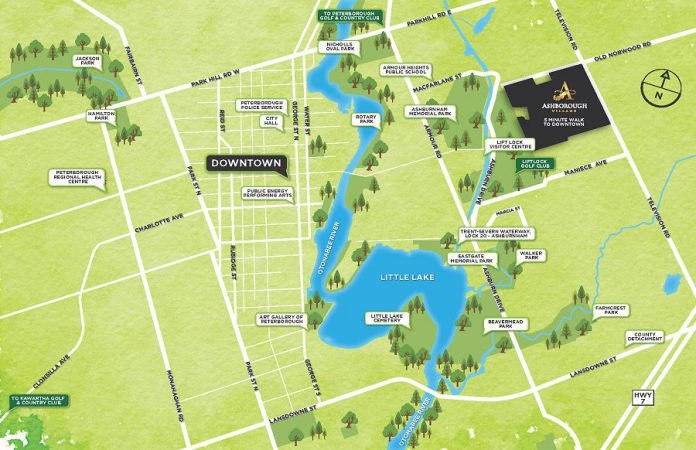
With our current and expected occupancy rate per unit, that translates into more than 3,000 additional people — which, I’m willing to estimate, is roughly the population of East City’s traditional boundary of Parkhill Road/the Canal/Maria Street/the River.
No community can handle that kind of immediate densification. Particularly one the size of East City.
We can throw the new Canadian Canoe Museum into this area of growth for good measure. And a 600-student elementary school.
We’re looking at way more people and vehicles than can be accommodated.
What’s worse, the builds don’t even meet community needs.
Neither the Ashborough Village subdivision nor the TVM Group condos will be priced anywhere near affordably for renters or first-time home buyers — at least not in the Peterborough job market. The Skyline Group apartment complex, representing only a small part of this overall growth, will be charging “market rate,” which will push the prices beyond what many students, young workers, and lower-income people can afford.

Just listen to renters now: the Peterborough job market and cost of living do not allow for the prices being charged for rent.
The Ashburnham Realty units planned for along the Rotary Trail certainly don’t look like they’re going to be affordable to many existing Peterborough renters either.
An affordable housing strategy needs to be part of an overall effective master plan. And not just “affordable housing” in a subsidized manner, but housing that is affordable to those struggling to survive on lower wages.
That plan also has to include complete streets transportation planning and health/lifestyle/social infrastructure.
Planning needs to happen before builds are announced. But, so far, there’s been no word on how the City will accommodate this pace of growth, the needs of the existing community, the needs of new residents, or the strain it will put on an infrastructure that is already stressed.
In short, we’re building a city on a village footprint with village infrastructure.
Which just won’t work.
For anyone.
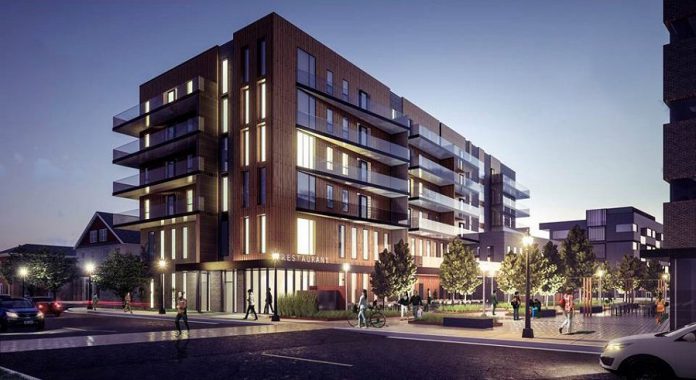
Moving traffic in/out/through East City is going to be a major, major challenge. Your access points are the Lift Lock, the Maria Street swing bridge, and the single lane McFarlane bridge. Two of those are residential. Two of those are one way. And your main intersection will be the hilltop Armour Road and Hunter Street East.
Just imagine.
Traffic will spill into side streets, affecting lifestyle, quality of life, and pedestrian safety. As it is, the Nicholls Oval park and Armour Hill areas are dangerous pedestrian zones. Expect more traffic/traffic safety/pedestrian safety hotspots to develop. The Maria Street area in particular.
It will become common for cars to race through narrow residential streets to avoid the non-arterial routes that will now be major traffic corridors.
In fact, it’s already happening, with vehicles avoiding the McFarlane Street/Armour Road and Parkhill Road/Armour Road intersections and using Swanston Avenue, Euclid Avenue, and Caddy Street. Similarly, Douro, Mark, and Rogers Streets are already busy with much of the relief traffic from Armour Road and Hunter Street.
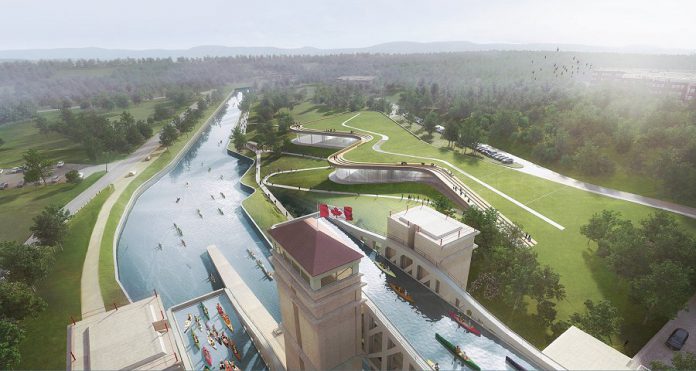
This is going to get dramatically worse. And it’s going to spread.
As the former chair of Active and Efficient Community Routes Peterborough and Active and Safe Routes to School Peterborough, I remain alarmed at some of the pedestrian dangers in the current East City neighbourhood. As the former Air Quality/Transportation manager for GreenUP, I’m concerned about our already existing inability to deal with infrastructure needs around some of our most frequently used pedestrian areas.
During recent Curtis Creek neighbourhood environmental focus groups with community members and stakeholders, traffic reduction and traffic calming were both cited at primary needs of the community. In short, areas such as Armour Road are already failing us as mixed-use transportation zones. And we’re planning on adding thousands of more residents — and their vehicles — into this already overburdened residential neighbourhood.
As for services, the new East City school is being planned for the middle of this already-stressed area — and directly across the street from 500 new housing units. An already very large school, its capacity does not allow for this unplanned growth; these builds will push the school past its capability to meet enrollment numbers, and ground hasn’t even been broken in constructing it yet.
It is also going to be surrounded by extremely high volumes of traffic. This is definitely a situation where the kids attending the school are in tough.
Where, I wonder, will all of these residents go for a doctor? And how the heck will they get there?

And, again, what’s worse is that these builds are doing little to address the current housing crisis. With the existing development master plan looking at an increase of population of 31,000, and with the access price for all of these units being as high as they are, it is very apparent that developers are not looking to produce dwellings that will reduce the housing crisis in Peterborough. The bulk of these properties just aren’t meant to attract the existing population of people living here.
In short, we’re adding all of the problems of unplanned densification while doing little to address the glaring needs of our existing housing crisis.
And it is definitely unplanned. After all, this area is not classified as one of the “intensification nodes” listed in our current master plan, nor is it in one of the established “intensification corridors.” That in itself speaks volumes. The area was just never meant to house thousands of potential residents.
I always hoped that Peterborough would be different than other Ontario communities that put growth before planning. We aren’t. We haven’t.
And we’ll feel the consequences. Sooner rather than later.
Right now, the future of Peterborough — including the fate of East City — rests with our current council. We have passionate progressive leaders. We need planning policies that reflect that.
But they need to act. And they need to act now.
Before it is just East City that is lost.


